Part of a series of articles titled Park Paleontology News - Vol. 12, No. 2, Fall 2020.
Article
Prehistoric Road Trip Helps Expose Deep Histories of some National Parks in New PBS Series

Emily Graslie, Producer and Chief Chief Curiosity Correspondent
The Field Museum
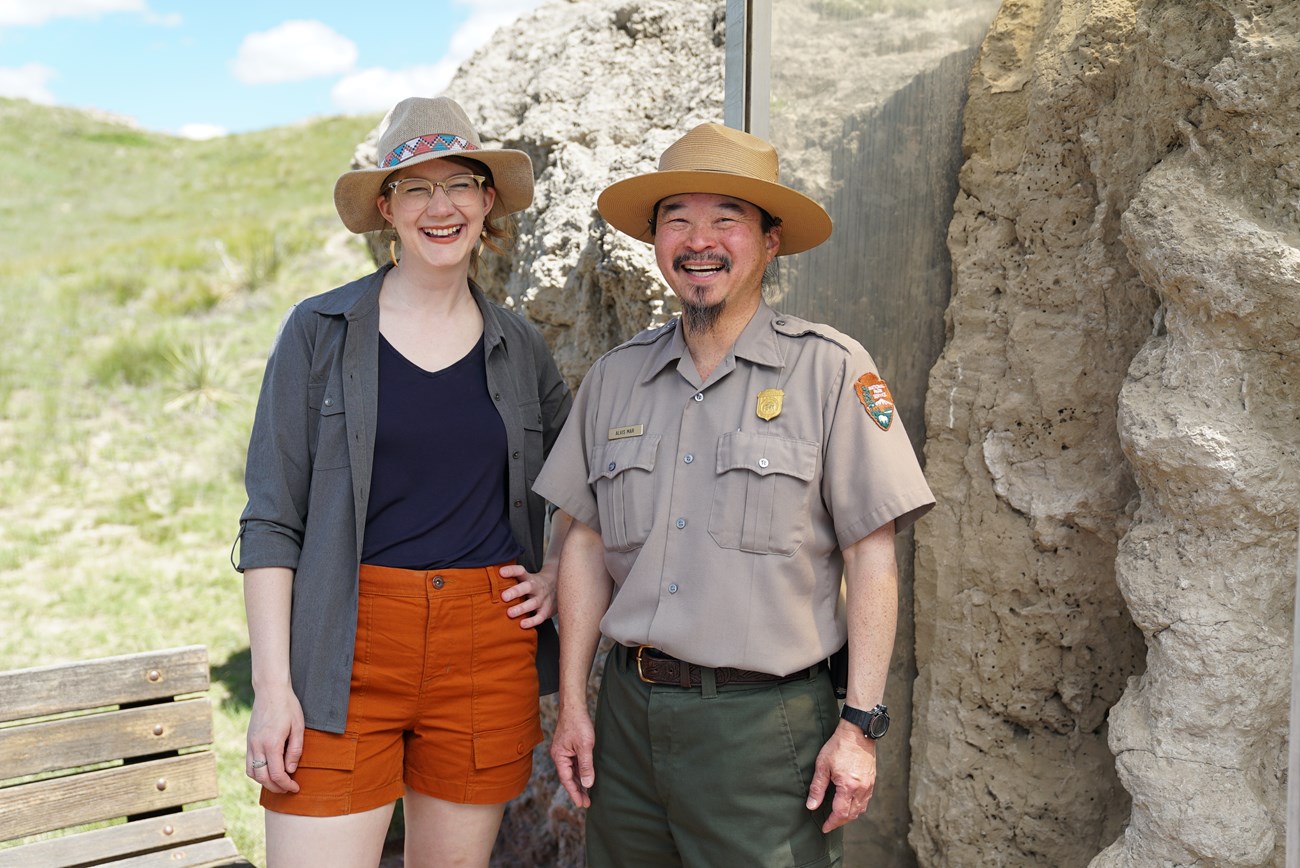
Photo courtesy of Julie Florio © WTTW Chicago.
Introduction
After three years in the making, my first broadcast television series, Prehistoric Road Trip, premiered this summer on PBS stations across the country. What began as a simple lunch conversation back in 2017 with Chicago’s PBS station WTTW developed into this three-part miniseries, the subject matter of which spans more than 2 billion years of Earth’s history and thousands of miles across a five-state region covering the Northern Great Plains of the United States. If you think that seems like an unimaginably vast amount of time and space to cover in three 1-hour-long episodes, you would not be wrong. But part of what made this ambitious program feasible is the tremendous working relationships our production team and I were able to develop with land managers across the region, from ranchers to universities and colleges, Tribal governments, state parks and everything in-between, as well as a few strong partnerships and collaborations with the National Park Service. It was an absolute delight to film at, in and around sites managed by the NPS, with the goal of helping our viewers better understand and celebrate some lesser-known, fossil-focused stories made possible by the Parks, their scientists, stewards, and visitors. Here are some highlights:
Badlands National Park, South Dakota
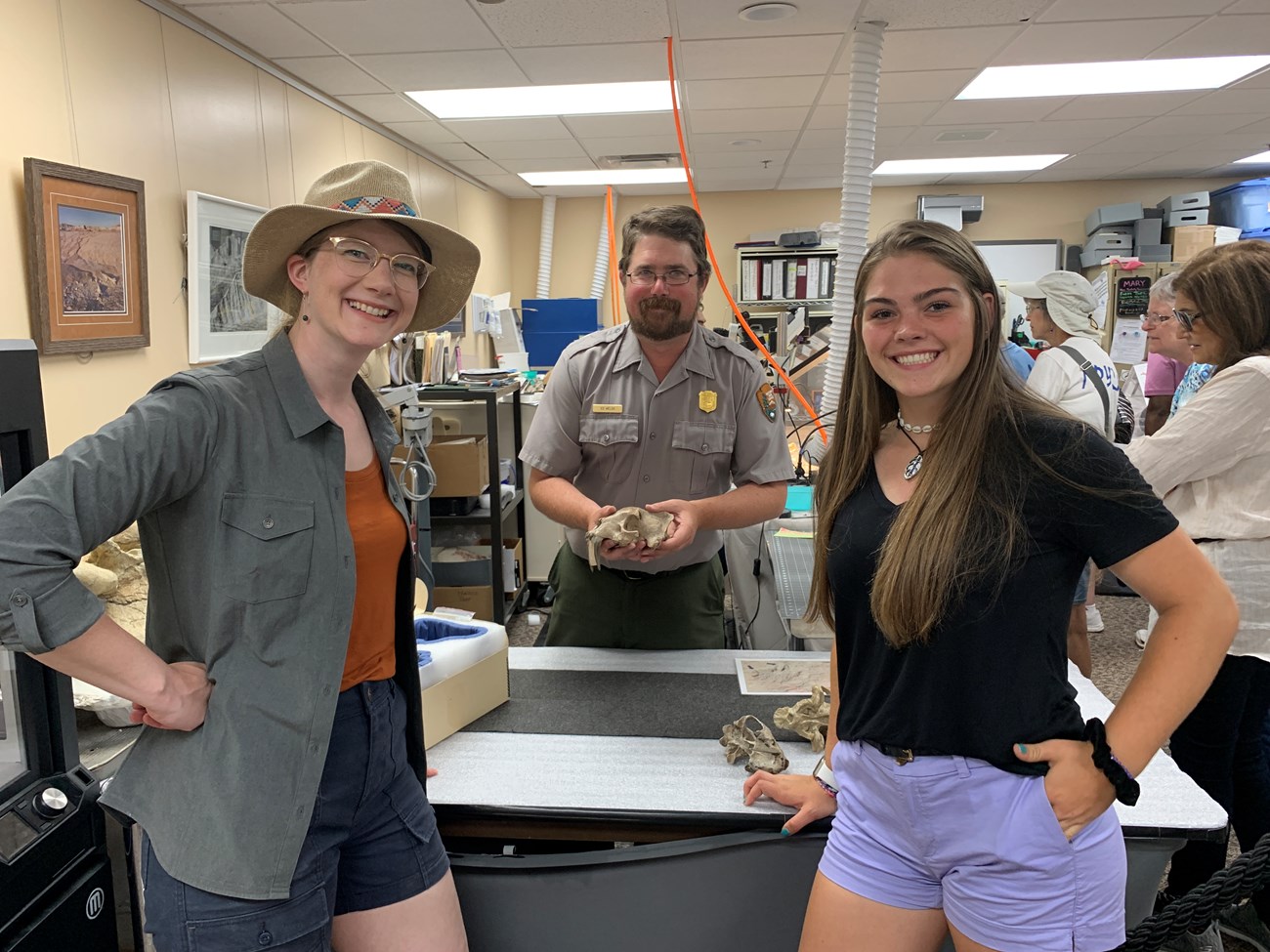
Photo courtesy of Emily Graslie.
The first National Park we visit in the series is Badlands, located in western South Dakota and just about a 1.5 hours’ drive from where I was born and raised in Rapid City. When it came to identifying key filming locations for the series, Badlands was immediately at the top of my list for a few reasons:
- The amount of geologic time represented within the Park is vast (more than 75 million years!) and its fossil record is extensive: paleontological interest in this region dates as far back as the 1840s! There’s a TON of history there to dig into (pun absolutely intended).
- Visitors exploring the open-access nature of the park have boundless opportunities to make fossil discoveries on their own as they explore the park’s canyons, buttes and spires, thus providing an opportunity for visitors to participate in community- or citizen-science initiatives like Badlands’ Visitor Site Report (VSR) program. When visitors are aware of the VSR program and follow through with reporting their finds, park personnel are better able to track and manage fossils exposed throughout the park, many of which they may not have an awareness of otherwise.
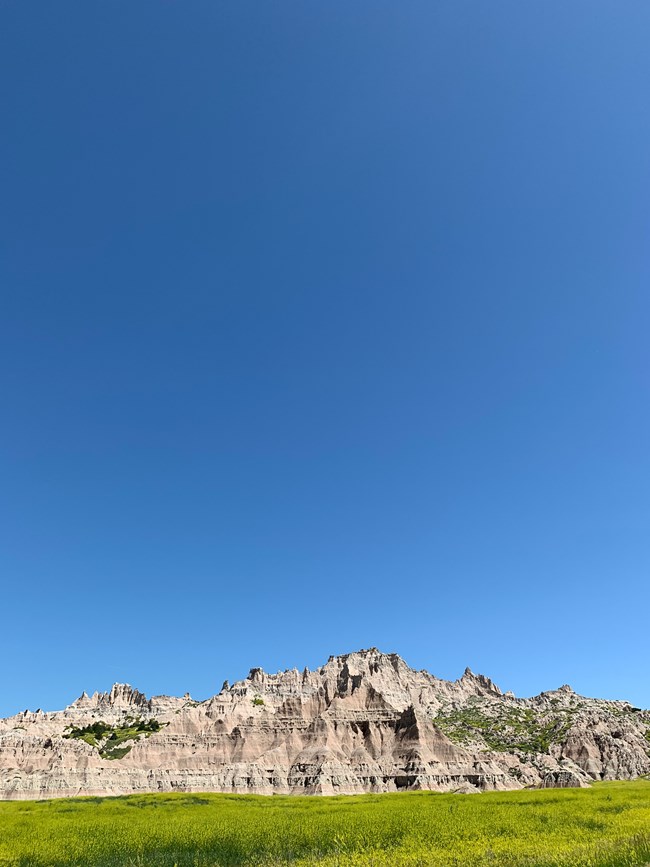
Photo courtesy of E. Graslie.
It was early on in mapping out the stories we wanted to include in the program when my co-producer and the series’ director Ally Gimbel and I learned about the story of 7-year old Kylie Ferguson, who—on a visit to Badlands National Park with her family in 2010–came across a mysterious fossil eroding out of a butte literally steps away from the Ben Reifel Visitor Center. She had just finished her Junior Ranger Program training and knew to alert park personnel to the discovery. But neither she nor the park rangers could have known then just how big of a discovery she had made. It wasn’t until later when the fossil was carefully excavated and prepared by park paleontologists that they realized Kylie had uncovered a 50+ million-year-old murder mystery! The skull in question belonged to a saber-toothed cat-like animal called a nimravid, and CT-scans undertaken at the hospital in Rapid City revealed that the cause of death was likely bite wounds inflicted by another nimravid in a ‘cat-on-cat’ attack.
The story of the initial discovery would have been fun enough to share on its own, but we knew we wanted to take it a step further. We spent a few weeks working with current Badlands park rangers to try to track down Kylie because we wanted to see if her fateful visit to Badlands years ago left a lasting impression. Lucky for us, because Kylie “did the right thing” and reported her find we were able to get in touch with her family who were all tremendously excited to hear we wanted to feature the story in our program. Coordinating a big television production is, well, a production—we only had two days to film in Badlands, and Kylie’s family lives in Florida—but the universe smiled upon our calendars and we managed to align our schedules to bring Kylie back to the park for the first time in 10 years. Her interview included a retelling of her discovery, as well as an update from Ed Welsh, a Badlands paleontologist and park ranger, who filled us in on all of the exciting research that’s been undertaken on the nimravid skull over the last decade.
The discovery of such an immaculately preserved animal’s skull from tens of millions of years ago is undoubtedly cool enough on its own, but to be able to celebrate and include the visitor who made that discovery possible, along with the park rangers who are carrying on further research about her find, was icing on the cake.
Agate Fossil Beds National Monument, Nebraska
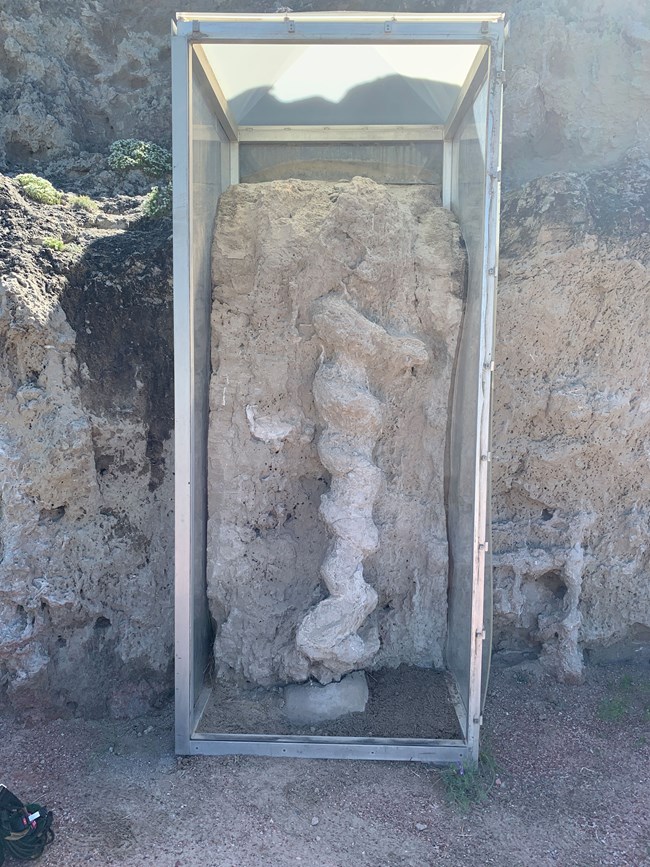
Photo courtesy of Emily Graslie.
Despite spending the first 17 years of my life a few hours’ drive away from Agate Fossil Beds National Monument, it wasn’t until we were doing early research for this program that I learned about this gem in the Nebraska prairie. But, it’s not just me: Agate is one of the lesser-visited National Monuments primarily due to its relatively remote nature near the tiny town of Harrison (population: 227). Still, if you get a chance to visit Agate, don’t pass it up: it’s one of the few places where you can walk right up next to a strange paleontological feature of the Great Plains known as a Daemonelix, or “Devil’s Corkscrew.” These bizarre, tall spiral-shaped structures were created by a now-extinct species of ancient land beaver called Palaeocastor, and over time some of these burrows have been exposed due to the natural erosion of the sediment that encased them for tens of millions of years. Besides the Devil’s Corkscrew, extensive fossil beds at Agate preserve one of the most significant assemblages of Miocene mammals found anywhere in the world, making this National Monument a must-stop for anyone’s thorough prehistoric adventure—and a welcome addition to our program for the many people who may not have learned about it otherwise!
Fossil Cycad National Monument, South Dakota
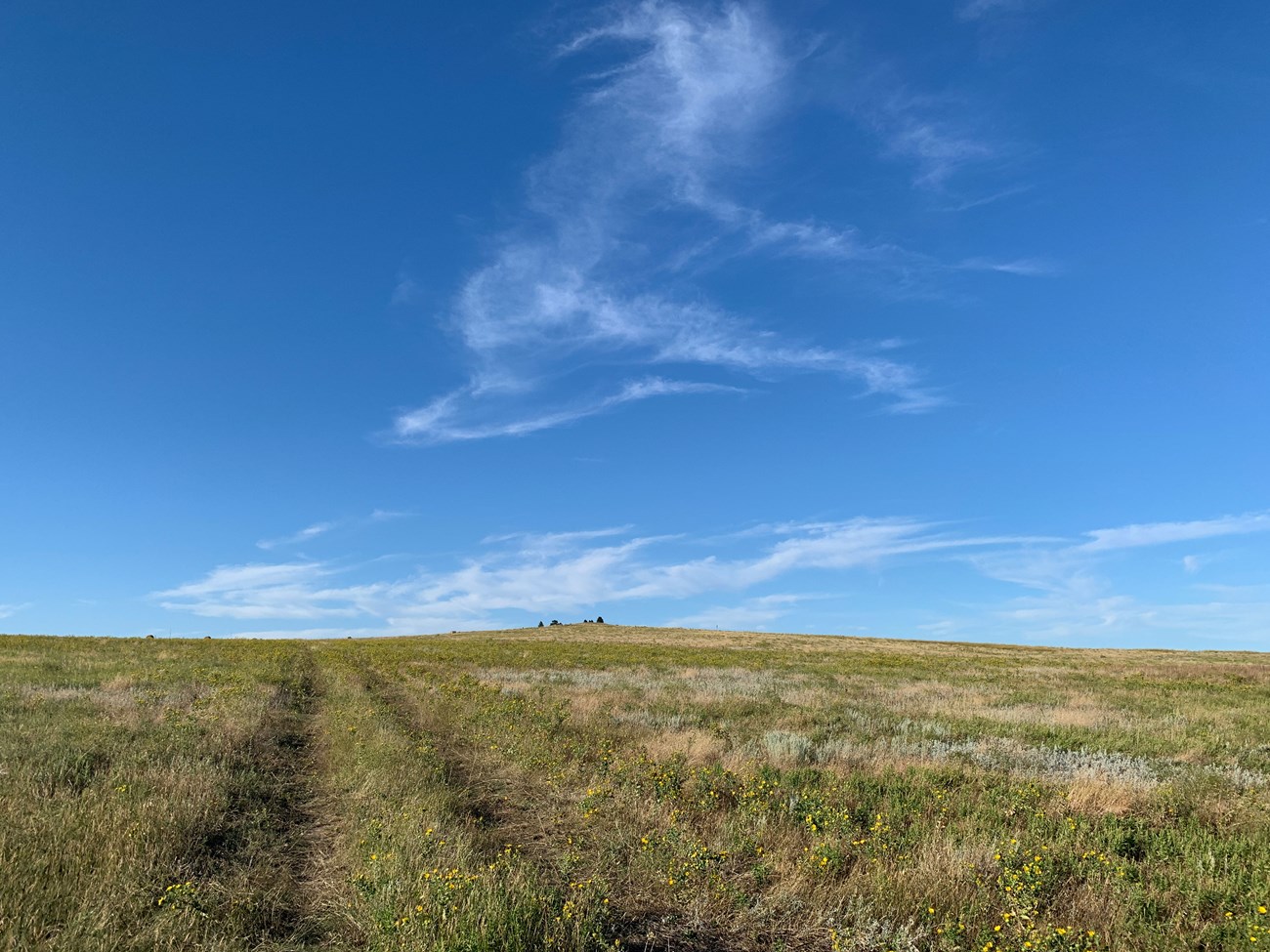
Photo courtesy of Emily Graslie.
If you haven’t heard of Fossil Cycad National Monument you’re not alone, nor would I be surprised: technically this monument doesn’t exist anymore as it was abolished in 1957—even before it could be fully realized or established. The quick version of the story goes like this: in the early 1900s word got out to paleontologists that there was a vast field of prehistoric fossil plants called cycads located outside the town of Edgemont, South Dakota. One paleontologist in particular, George R. Wieland at Yale University, developed something of an obsession with these rare fossils and began a multi-year effort to excavate the vast majority of the fossils and ship them back to Yale while simultaneously recognizing and acknowledging their greater importance and scientific significance. He had a vision that the area containing the fossils should be set aside and protected, even going so far as to acquire 160 acres of the land with the goal of donating it back to the newly established National Park Service. In 1922 the area was officially deemed protected and was placed under the jurisdiction of the NPS. But over the course of the following decades there was little movement in the direction of building any infrastructure at the site. Meanwhile, visitors were known to take cycads as souvenirs when they could easily be found on the ground’s surface, and Wieland had already removed thousands of the fossils and taken them back with him to Yale. By the 1950s there were hardly any fossils left at the surface, and the decision was made to abolish Fossil Cycad National Monument.
The story of the rise and fall of Fossil Cycad National Monument has proven to be a cautionary tale with a valuable lesson for public land stewards, natural resource managers, and the curious public alike. It comes down to this: as we continue to hurtle into the unknown future we are simultaneously uncovering the unknown past, and unless proactive measures are undertaken we risk the preventable loss of the very nonrenewable resources that help us to understand the planet and our place within it. And it’s up to all of us -- both employees of and visitors to the National Parks alike -- to assume responsibility for the role we each play in preserving, protecting, sharing and celebrating our collective natural heritage.
All three episodes of Prehistoric Road Trip are available to stream for free from WTTW; the stories shared in this post are featured in Episode 3: Tiny Teeth, Fearsome Beasts. Additional information about the program, including behind-the-scenes videos, exclusive digital content and an Educator Guide can be found at WTTW.com/PrehistoricRoadTrip.
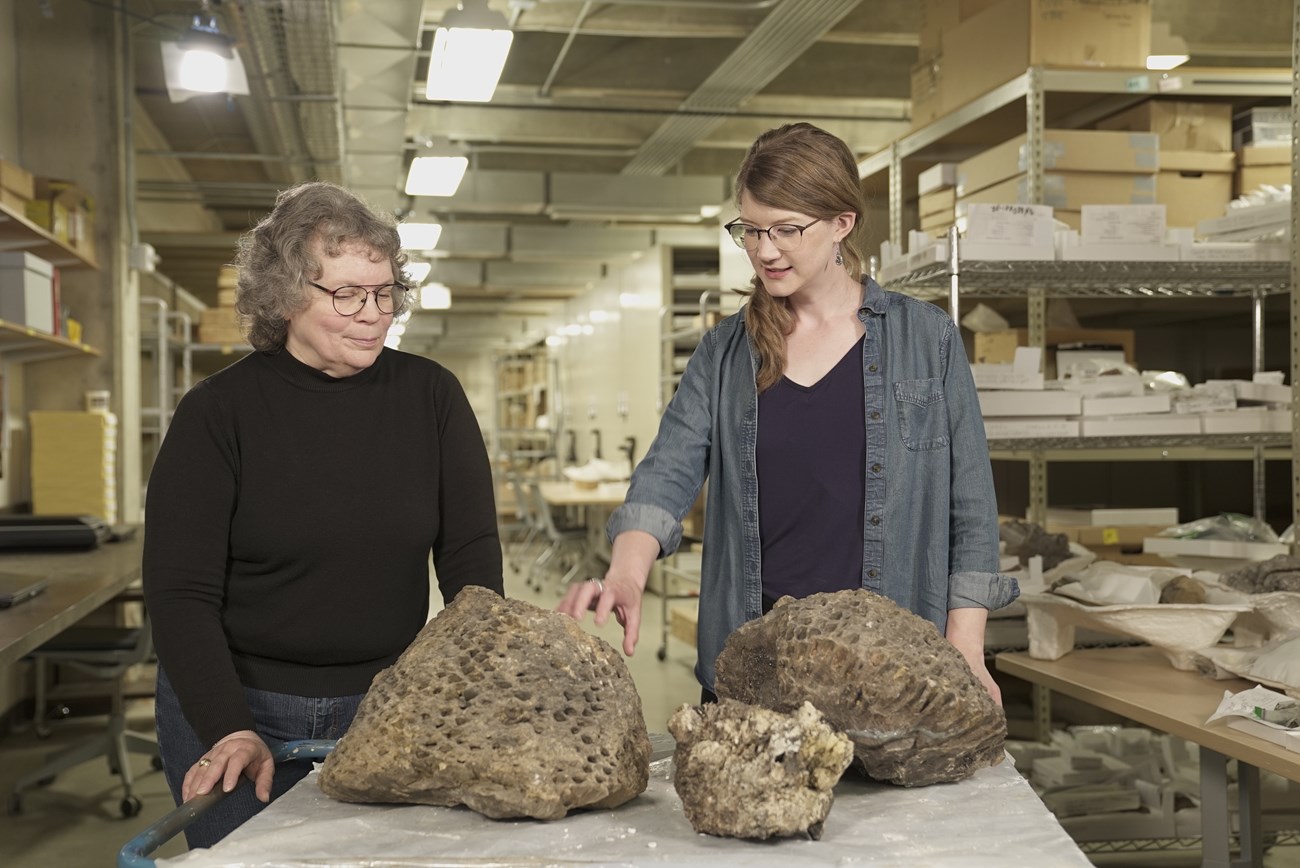
Photo by Julie Florio © WTTW Chicago.
About the Author
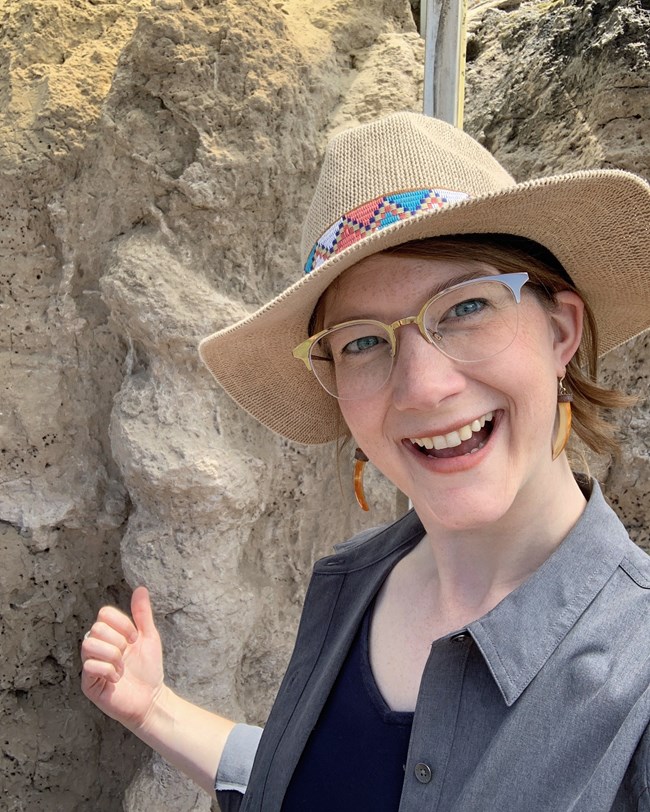
Photo courtesy of Emily Graslie.
Emily Graslie is the host, writer, and executive producer of the new PBS natural history series PREHISTORIC ROAD TRIP. She was born and raised in Rapid City, South Dakota. After moving to Missoula, Montana to pursue an undergraduate degree in fine art painting, Emily fell in love with the campus vertebrate research collection as a place of artistic inspiration. What began as a passionate volunteering position within a small museum eventually morphed into a career as an advocate for these often underappreciated repositories. Emily currently serves as Chief Curiosity Correspondent for Chicago’s Field Museum, where she uses a variety of new media to communicate the importance of natural history museums with the world, including her YouTube channel, The Brain Scoop, which has attracted more than a half-million subscribers.
Related Links
- Agate Fossil Beds National Monument, Nebraska—[Geodiversity Atlas] [Park Home]
- Badlands National Park, South Dakota—[Geodiversity Atlas] [Park Home]
- Fossil Cycad National Monument—History
- WTTW—Prehistoric Road Trip
- NPS—Fossils and Paleontology
- NPS—Geology
Last updated: October 8, 2020
